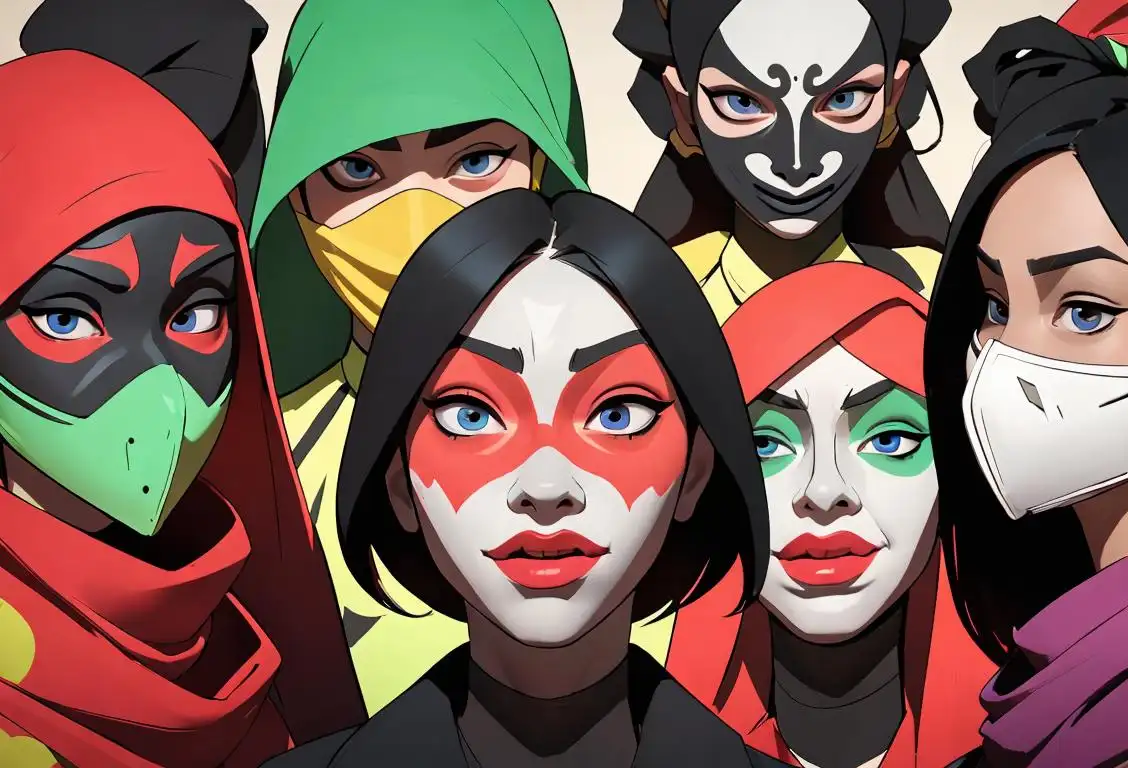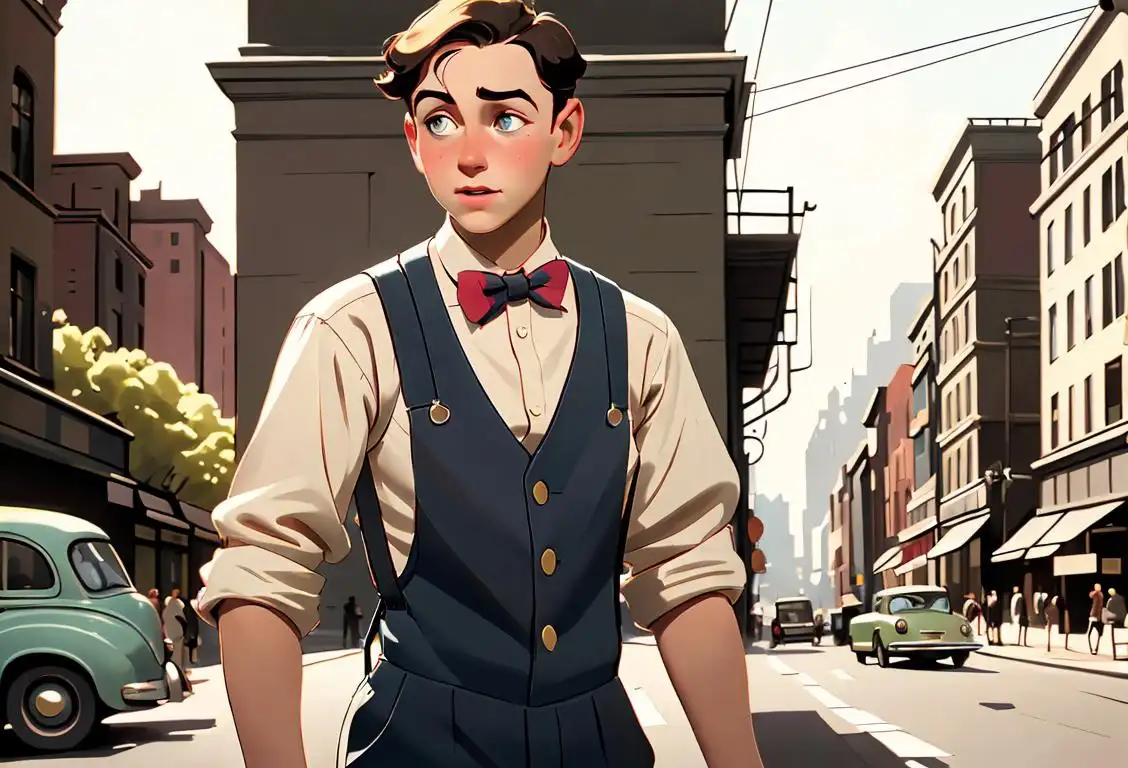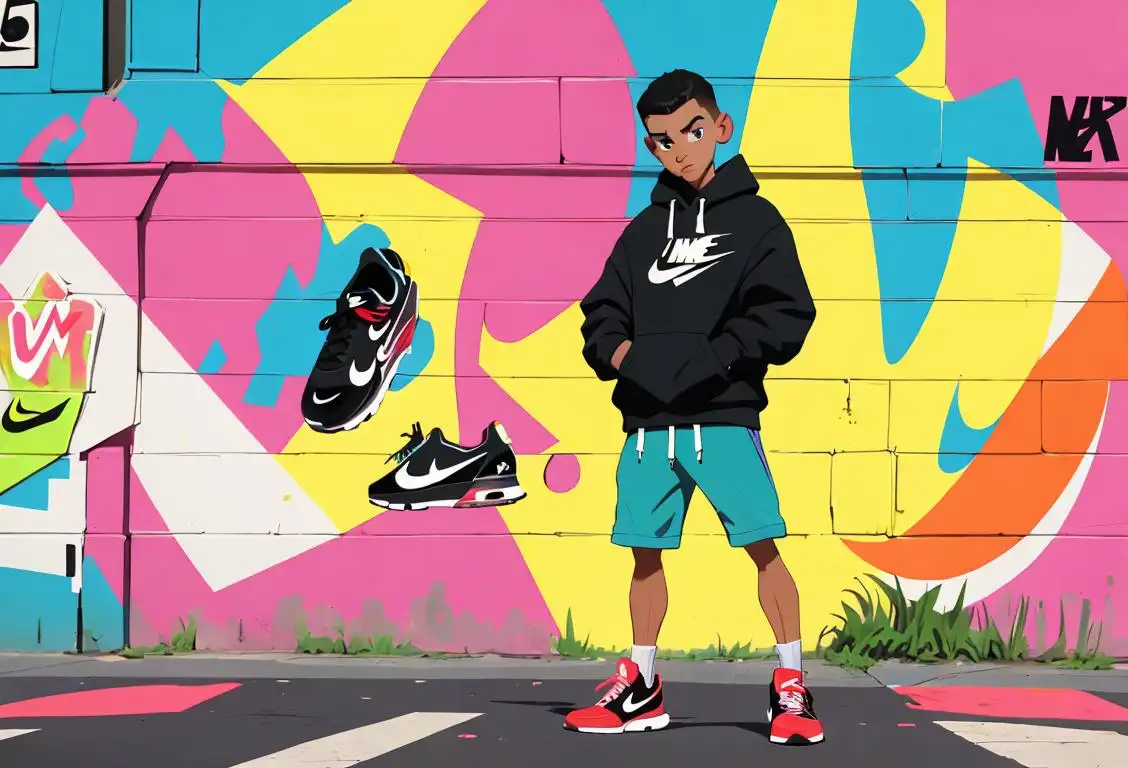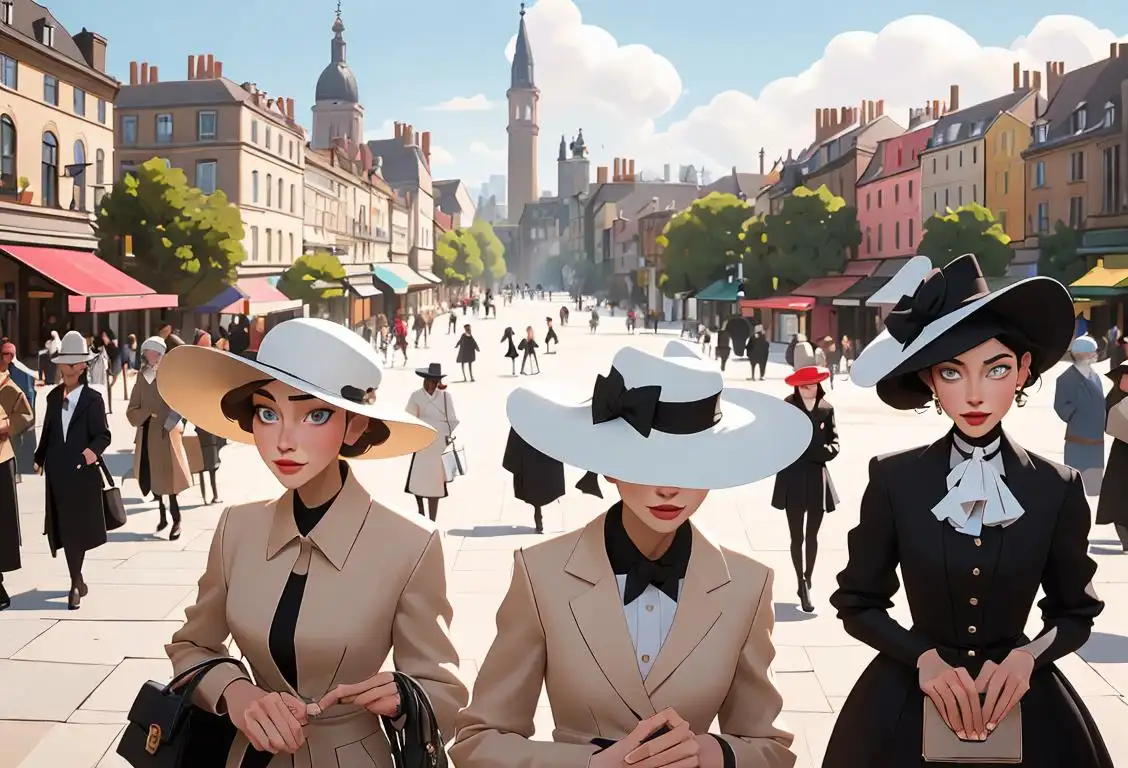National Blue Jeans Day

Hey there, denim enthusiasts! Are you ready to celebrate National Blue Jeans Day? Grab your favorite pair of jeans and get comfy because we've got an article packed with interesting facts, hilarious anecdotes, and a whole lot of denim love for you.
When is Blue Jeans Day?
It's national blue jeans day on the 5th December.
The Internet History of National Blue Jeans Day
Did you know that the internet played a significant role in the creation of National Blue Jeans Day? It all started with a group of passionate denim lovers who wanted to give their favorite pants a day of recognition. They took to social media, sharing stories and photos of their beloved blue jeans, and their enthusiasm quickly spread like wildfire.
On December 5, 2017, the internet exploded with discussions about blue jeans, and National Blue Jeans Day was born. People from all walks of life joined the movement, proudly showing off their denim and spreading the love for this timeless fashion staple.
Now, every year on December 5th, we celebrate National Blue Jeans Day by wearing our favorite pair of jeans and appreciating the versatility, comfort, and style they bring to our lives. It's a day to embrace our personal sense of fashion and connect with denim enthusiasts around the globe.
Why We Love Blue Jeans
Blue jeans have become an iconic garment that transcends age, gender, and social status. Here are a few reasons why we can't help but adore them:
- Comfort: Wearing jeans is like getting a warm and cozy hug. They're the perfect combination of softness and structure.
- Style: Whether you prefer a classic straight leg or a trendy skinny fit, jeans have a way of making us feel stylish and put together.
- Versatility: From casual Fridays at the office to weekend adventures, blue jeans can effortlessly transition from one occasion to another.
- Durability: A good pair of jeans is a lifelong companion. They can withstand countless washes and still look as good as new.
Did You Know?
Did you know that blue jeans were originally invented for miners and cowboys? The durable denim fabric was perfect for the tough conditions they faced, and the simple design made them practical and reliable. Little did those miners and cowboys know that their workwear would someday become a global fashion phenomenon!
History behind the term 'Blue Jeans'
1873
Birth of Blue Jeans
In 1873, blue jeans were born. Levi Strauss, a German immigrant, and Jacob Davis, a tailor, teamed up to create sturdy work pants made of denim fabric. Originally referred to as 'waist overalls', the pants featured metal rivets at points of strain to reinforce the durability of the garment. This innovation revolutionized the clothing industry and laid the foundation for the iconic blue jeans we know today.
1847
Birth of the term 'blue jeans'
In 1847, a German immigrant named Levi Strauss arrived in San Francisco. He was a businessman who sold various goods, including canvas for wagon covers and tents. Jacob W. Davis, a tailor from Nevada, approached Levi Strauss with an innovative idea. He had developed a method to reinforce the weak points of denim pants by using metal rivets. When Strauss saw the potential, they received a patent in 1873, marking the birth of 'blue jeans.'
1880s
Rise in Popularity
During the 1880s, blue jeans began to gain popularity beyond the realm of workwear. Miners, cowboys, and laborers across America embraced the durability and comfort offered by these indigo-dyed pants. Soon, blue jeans became synonymous with the American West, representing a rugged lifestyle in the collective imagination.
1880s
The popularity of blue jeans among cowboys
During the 1880s, blue jeans gained significant popularity among cowboys. The durable nature of denim made it an ideal fabric for their rugged lifestyles. Cowboys found that 'blue jeans' were both comfortable and practical for their daily activities, such as riding horses and working on ranches.
1930s
The rise of Hollywood and blue jeans
Blue jeans gained wider recognition and became an emblem of rebellion and individuality during the 1930s. Hollywood movies featuring rugged actors like John Wayne and Marlon Brando portrayed the denim pants as symbols of masculinity and a rebellious spirit. The association with these iconic actors and their characters solidified the popularity of blue jeans among the general public.
1930s
Hollywood Influence
In the 1930s, blue jeans made their way onto the silver screen, thanks to Hollywood's influence. Western films prominently featured actors like John Wayne wearing blue jeans, solidifying their association with the rugged cowboy archetype. This exposure fueled the popularity of blue jeans, making them even more desirable among the general public.
1950s
Youth Rebellion and Counterculture
In the 1950s, blue jeans became a symbol of youth rebellion and counterculture. Films like 'Rebel Without a Cause' featuring James Dean portrayed blue jeans as a rebellious attire choice, challenging mainstream norms. This association with youthful defiance further propelled the popularity of blue jeans among teenagers and young adults, solidifying their status as a fashion staple.
1950s
Blue jeans become a symbol of youth culture
In the 1950s, blue jeans became strongly associated with youth rebellion and counterculture movements. Teenagers embraced the casual and nonconformist nature of denim pants, adopting them as a form of personal expression. The rise of rock and roll music further solidified the connection between blue jeans and youth culture, with iconic figures like Elvis Presley sporting them.
1960s
Fashion Forward
During the 1960s, blue jeans underwent a transformation from strictly workwear to a fashion statement. Fashion designers such as Calvin Klein and Yves Saint Laurent incorporated blue jeans into their collections, elevating them to high fashion status. This shift broadened the appeal of blue jeans, making them more accessible and acceptable in various social settings.
1970s
Designer jeans and high fashion
During the 1970s, blue jeans underwent a transformation from functional workwear to high fashion. Designers such as Calvin Klein and Gloria Vanderbilt introduced branded and designer jeans to the market. The new styles and cuts elevated blue jeans to a statement piece, blurring the lines between casual and upscale fashion.
1990s
Global denim culture
The 1990s marked the global influence of blue jeans on fashion and culture. Denim became a universal fabric, symbolizing a sense of freedom, individuality, and Americana. International celebrities and musicians, including Madonna and Nirvana, embraced blue jeans as a symbol of coolness and rebellion, transcending geographical and cultural boundaries.
Did you know?
Did you know that blue jeans were originally invented for miners and cowboys?Tagged
celebration fashion denimFirst identified
1st April 2015Most mentioned on
5th December 2017Total mentions
75Other days
Blue Jeans Day
Big Wig Day
Handbag Day
Mask Day
Suspenders Day
Outfits Day
Eyewear Day
Air Max Day
Scarf Day
Wear A Hat Day








